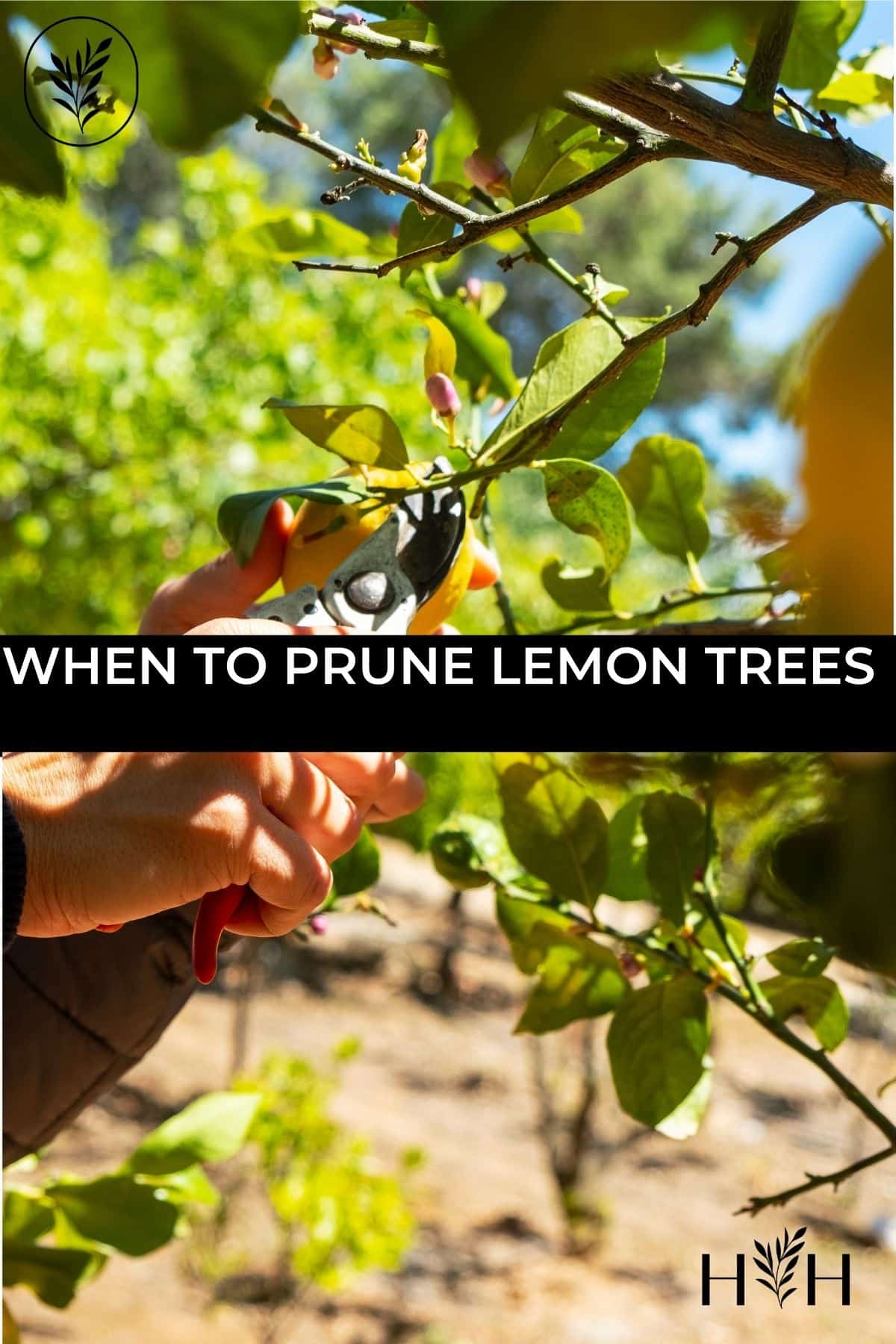If you’re wondering when you should prune your lemon trees, know that these trees are usually very tolerant and can be pruned most times of the year. That said, you can decrease your next harvest with too much pruning during certain seasons. Read on to learn all about when to prune lemon trees!
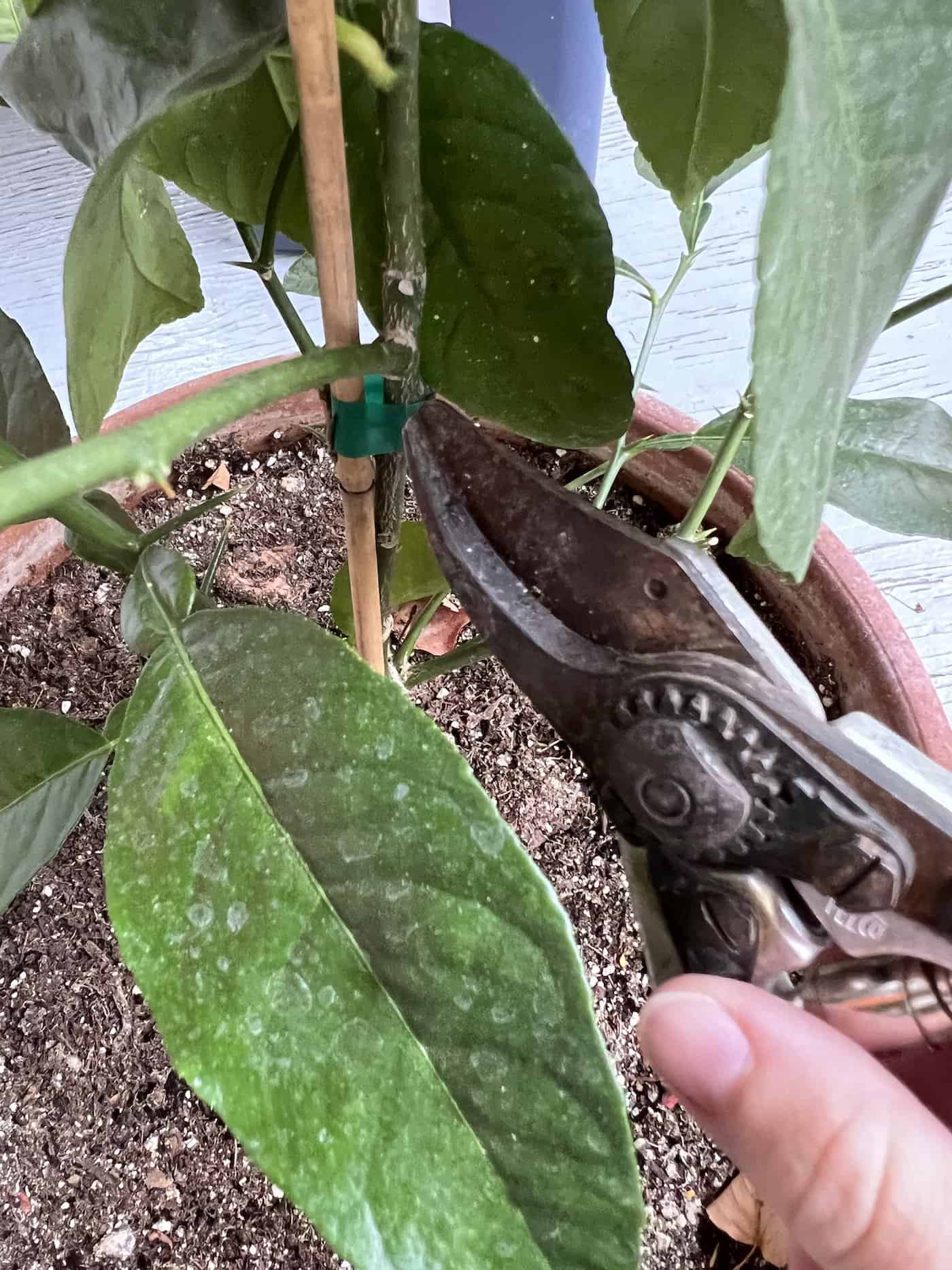
The best time of year to prune lemon trees
The best time to prune is in the spring, right after the lemon tree flowers, just after new fruit has been set. Then you will be able to determine how much fruit to leave on the plant to grow into mature lemons. This is a good time to do selective pruning that also thins the fruit so the remaining lemons will be bigger.
You can prune many lemon trees any time of year. Regular pruning is very important to a young lemon tree as this process keeps the plant from becoming scraggly and instead promotes dense, bushy growth.
Another good time to prune lemon trees is just as they are beginning to grow in late winter or early spring (when they break dormancy). Beware of taking off too much growth though, as this can decrease the upcoming harvest.
Young trees that do not yet fruit are easy to prune any time of year because the pruning process doesn’t remove any fruit buds and therefore decreases a future harvest. You can also prune mature lemon trees any time of year, although you may remove some future fruit in the process.
If lemon trees need a very hard, severe renovation pruning, this is usually done in the winter after fruiting. This process will likely delay the bloom of the flowers that follow and, therefore, also delay the next harvest period.
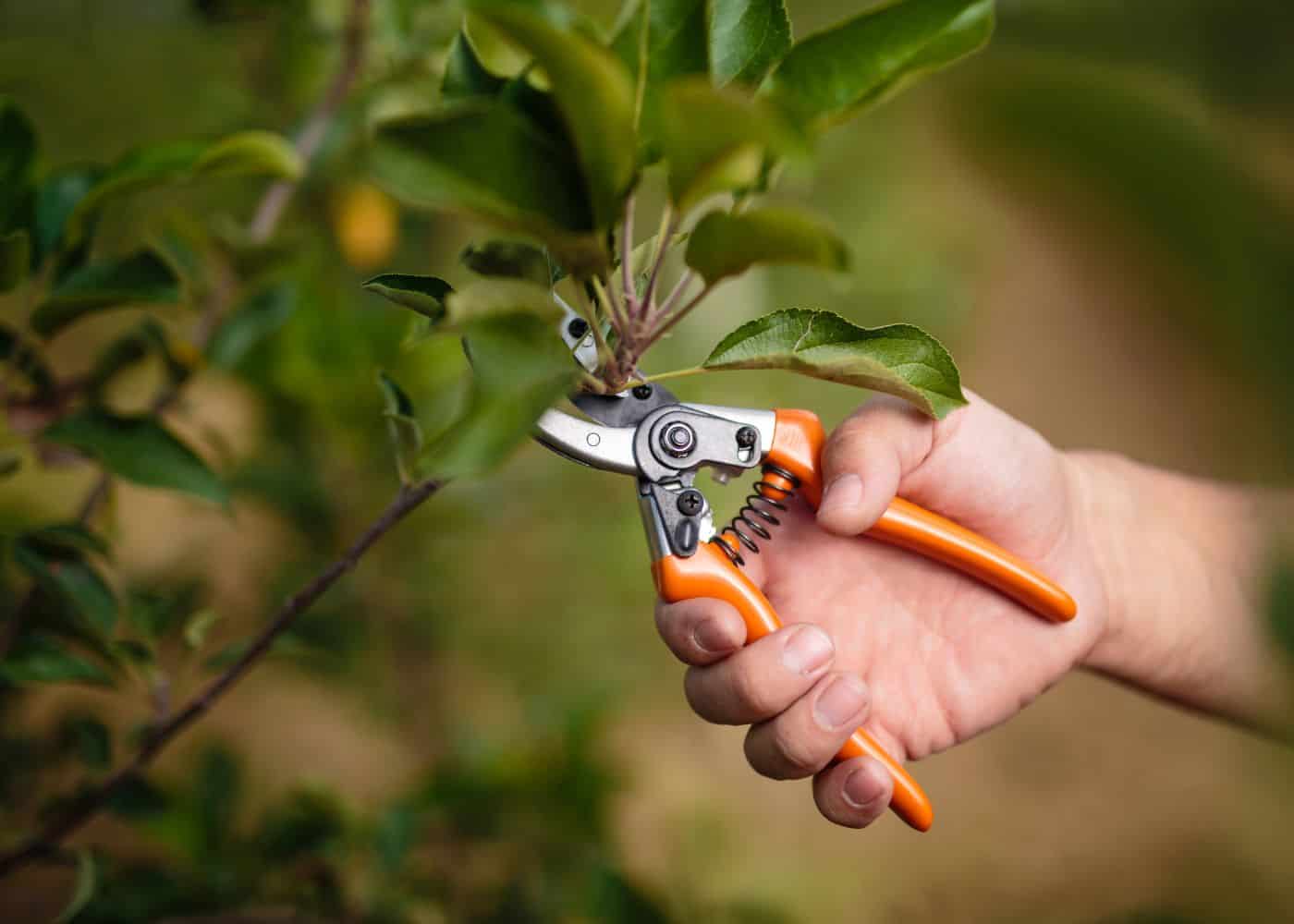
What month do you prune lemon trees?
The best month for pruning lemon trees is generally mid-February through March. That said, this often varies by climate and by the timing of the previous harvest.
Young trees can be pruned any time during the year, especially if you are pruning them into a specific shape. Avoid pruning your citrus trees when they are close to fruiting (usually, this happens in spring/summer).
Why should you prune citrus trees?
Pruning a lemon tree starts by removing any weak branches or crossing branches. Pruning is also important because it allows more light into the tree’s canopy, benefiting fruit production. Regular pruning allows the plants to recover well and yield new growth each season.
Healthy branches are given space to thrive when dead branches are taken away – both in potted lemon trees and trees in the ground. You will find they bear more fruit during the growing season and are all-around happier little plants.
Tools needed to prune a lemon tree
To correctly prune a lemon tree, ensure you have the appropriate tools to get started. You will need a trusty pair of pruning shears or a small hand-held serrated saw. Which tool you use is up to you and the age and size of your tree. It is recommended that all tools and pruning shears be disinfected to avoid contamination. Use gloves to protect your hands while your work.
After pruning, you may apply some organic herbicide. This will prevent infestation of weevils, snails, and wasps if your plant is outdoors. You don’t want them ruining your crop.
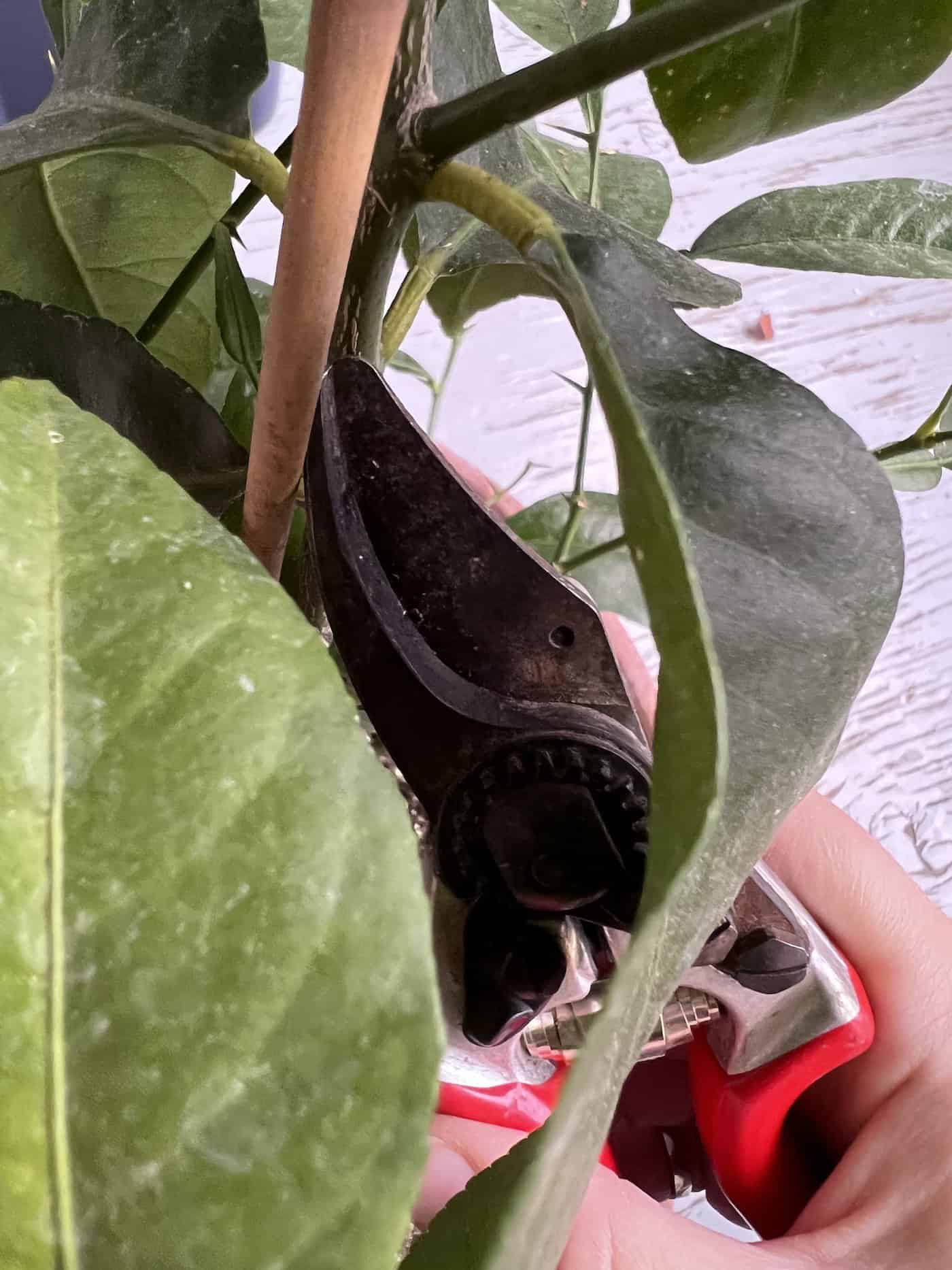
Ways to prune your lemon tree branches
There are a variety of simple ways to prune your trees. I tend to go with the simple versions, but some people like to get creative and artistic with their pruning.
You can prune lemon trees in one of three ways:
- upright tree with a central leader (like a Christmas tree)
- dense shrub (with a bushy form and multiple stems)
- standard topiary (a stick topped with a sphere like a lollipop)
Prune the young plants for shape whenever the branches are getting loose and scraggly. For lemons with a central leader, shorten any stems that are growing as tall as the central leader so that the central leader is the tallest. For lemons being pruned into a standard topiary, cut back all other branches flush with the central leader so it’s just a vertical stick. Then prune off the tip of the central leader when it reaches the desired height.
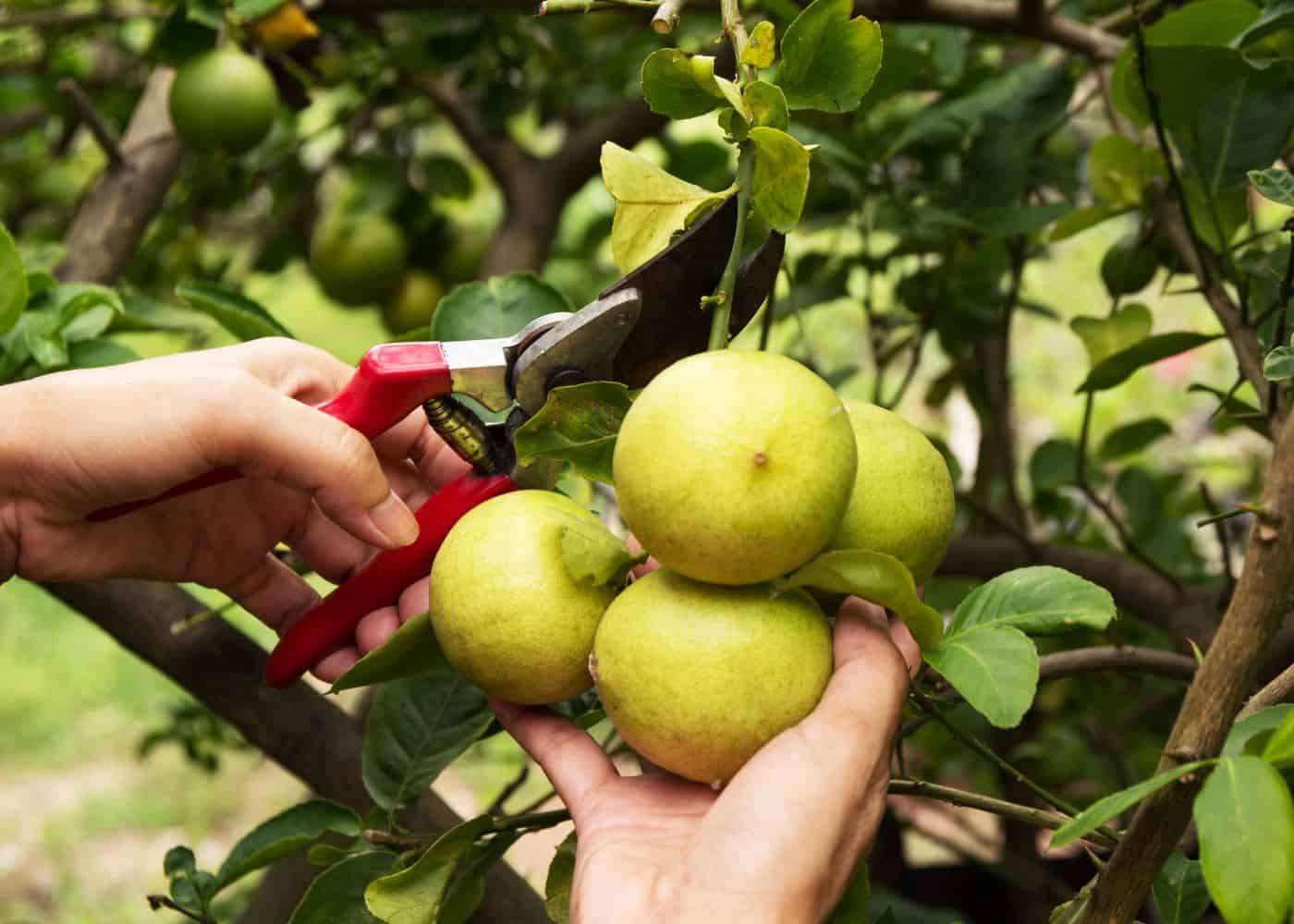
Can you prune mature lemon trees?
You can prune mature lemon trees any time of year, although you may remove some future fruit in the process.
The best time to prune is right after the lemon tree flowers, just after new fruit has been set. Then you will be able to determine the amount of fruit left on the plant to mature. Citrus plants set most of their fruits in the spring. This is a good time to do selective pruning with the least disruption to fruiting.
Another good time to prune lemon trees is just as they are beginning to grow in late winter or early spring (when they break dormancy). Be sure to do this well before the fruit starts to grow so you don’t stunt any growth.
If lemon trees need a very hard, severe renovation pruning, this is usually done in the winter after fruiting. This process will likely delay the bloom of the flowers that follow and, therefore, delay the next harvest period. Keep this in mind whenever you are doing renovations with your citrus trees.
Read more about when to prune citrus trees here.
Can you over-prune a lemon tree?
Yes, it is possible to over-prune a lemon tree. If you cut a lemon tree back too far, it will negatively impact fruit production and could potentially kill the tree. To avoid this, ensure you only cut it back about a third of the way. This is essential if you are trying to renovate a failing plant. Sometimes, you can cut it back to half its size, but be mindful of your plant before making this decision.
Can you top a lemon tree?
The top of a lemon tree is needed for the lemon tree to thrive. Cut back the branches and try to leave the top as much as possible. While this may benefit other plant species, it’s not the best practice for lemon trees.
The one exception is when you are pruning the tree into a standard “lollipop” topiary. In this case, wait until the main central stem is just longer than the desired height, and then snip it off at the top to encourage bushy side growth.
Some gardeners will mention that they prune the top; just be mindful of how your plant grows and pay attention to where you cut to prevent stunting. Your lemon tree and the fruit it bears will thank you!
Types of lemon trees
You will find many different citrus trees across the world. Lemon tree varieties range from dwarf lemon trees to full-sized lemon trees. The most popular dwarf lemon tree is the Meyer lemon tree. It’s known for its versatility and compact size. Gardeners and farmers love this tree and its edible fruit.
Want to know something cool? The Meyer lemon tree combines the lemon and the mandarin orange. That’s what makes it ideal for growing indoors. The smaller fruit doesn’t get in the way, but it’s also perfect for your backyard garden or front yard.
FAQs
How quickly do lemon trees grow?
The speed of growth of your lemon will depend on the variety/cultivar, its environment, and its care. Dwarf citrus trees mature in as little as 6 years, while others take 10 years or more to reach their final height. Take note of their age at planting to determine when you can expect fruits.




